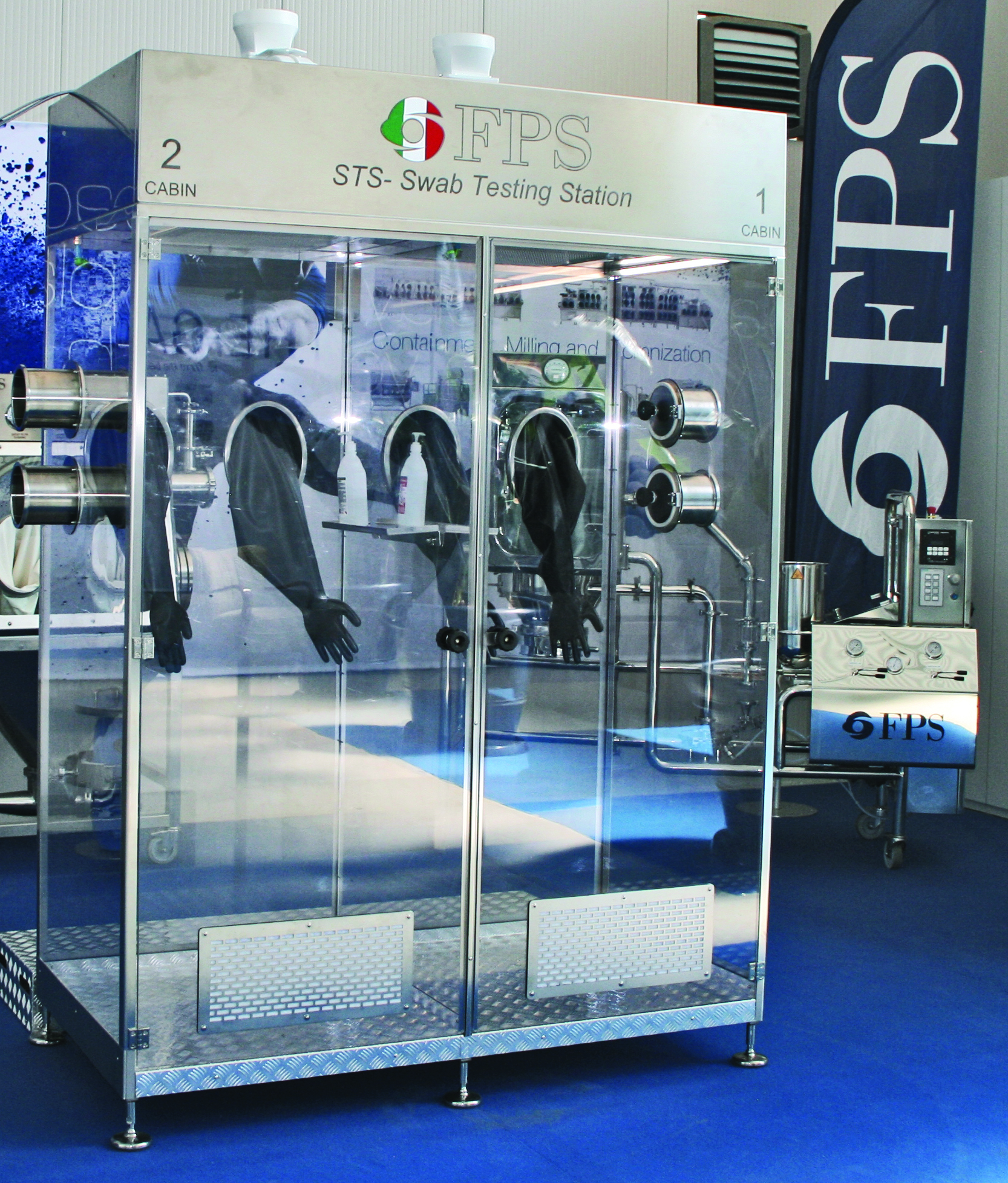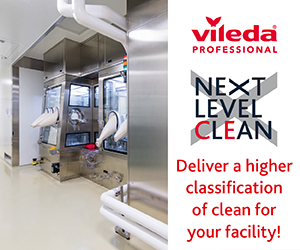FPS is an Italian company specialised in the design and manufacture of containment & isolation systems and micronisation solutions for the handling and production of active and sterile pharmaceutical ingredients. With almost 100 employees, more than 1,200 systems in operation worldwide, FPS presents itself on the market as an international company.
During this difficult period, FPS continues working giving full support to its worldwide customers to avoid the risk of impact on the continuous production of pharmaceutical compounds. This article discusses the development process of a new system engineered for the current international situation related to COVID-19.
The system is also equipped with air ventilation to speed up drying after sanitisation
Thanks to our experience in providing systems for personal protection and to avoid the risks of dangerous substances escaping into the atmosphere, a few weeks ago our internal team cooperation had an idea. The original plan was to build something to improve the overall safety of COVID-19 swab test execution. Using our experience in designing similar systems, we tried to combine good ergonomics and safety measures to enable the creation of the "Swab Testing Station" (STS) in a short period of time.
Inspired by the Korean hospital of Yangji in the Seoul area, in under two weeks, we designed and built the first prototype of STS. The idea is to provide a system able to perform the swab tests for COVID-19 on a high number of potentially infected patients in a few minutes and in total safety, both from the operator's and the patient's point of view.
The main focus was to make cabins that are easily transportable and, once positioned in strategic points as hospitals entrances, pharmacies, neighbourhoods, public spaces, allow for fast, safe and easy execution of swab tests to a wide number of patients. The system that was decided upon is composed of two cabins. While one is used for swabbing patient, the other can be sanitised ready for the next use, and it will allow the performance of up to 10 swabs per hour.
Technical features
The finished system consists of a module made of two cabins and has many technical features that optimise their usage. The module is set on supporting frame and therefore is easily transportable, which is key to a rapid response. It also requires zero assembly and is 100% plug-in system ready to use.

Within the frame of the new STS cabin, there is a physical barrier between the patient and the healthcare staff that are carrying out the procedure. This barrier ensures maximum protection by eliminating any risk of contact, and subsequent contagion. The physical barrier is possible as the wall itself is transparent plastic, with special glove-supporting ports installed within it.
This newly designed system means there is maximum reduction/elimination of contamination risks for the collected samples but also for the environment thanks to a safe system for removing the samples from the cabin (the safe system is called a "liner"). The waste products generated by the testing activities also have a safe removal system by means of a secondary line.
The system is also equipped with powerful air ventilation that speeds up the drying/aeration phase after sanitisation and reduces the downtime between tests.
Operational
The operating procedure (that can be easily adapted to different situations) could be the following:
- Patient A comes in cabin 1 while the 2nd Operator sanitises cabin 2.
- The 1st Operator provides guidance to patient A on how to position himself and how the test will be performed.
- Once the 2nd Operator has finished the manual sanitisation, the air ventilation starts in "high speed" mode to quickly remove the sanitising agent from the cabin.
- The 1st Operator performs the two swabs, sanitises them (externally) and places the collected samples in the safe "liner" side removal system. At the same time, the waste is placed in the waste liner.
- Patient A leaves cabin 1 and the 1st Operator (still positioned outside the cabin) safely picks up the samples using the liner system.
At this point, the sequence of operations can be repeated with a new patient in cabin 2 and the 2nd Operator, while the 1st Operator starts sanitising cabin 1.
Each cabin is equipped with an air inlet grid and an optional HEPA filter to ensure that the cabin air is safe to be released even in a closed environment. It is also possible to install an automatic sanitisation system to eliminate or reduce the need for the physical presence of any operator in the cabin.
FPS is now open to provide this first prototype as free of charge demo and test unit to different hospital or association that might be interested in its use and development.
The system that was decided upon is composed of two cabins
We have received interest from Italy but also from a foreign country and this makes us proud of the work we have done. Carlo Corsini, the owner of FPS, also says: "I'm proud of our dedicated team for working together and putting their technical skills at the service of public health on such short notice, working with enthusiasm despite the difficult period we're all going through".
We are also working on new development of this kind of system. We currently have a simplified version of the previously described STS system under construction, with lower overall cost and faster manufacturing time, with the same level of safety.
In addition to the STS cabin, we also have a different version and configuration of the system that can be used for other critical activities like personal temperature measurement. The system can be set up to function with an operator inside the cabin to perform temperature measurements of a potentially infected patient similar to at hospital entrance, airports. Another operator would then be outside the cabin with a patient inside, for example at the exit of the possibly contaminated areas.
We try to keep aligned with the new requirements of this fast-evolving situation, keeping clear that our strategy should be focused to avoid any risk of delay to our current customers in the healthcare market.




